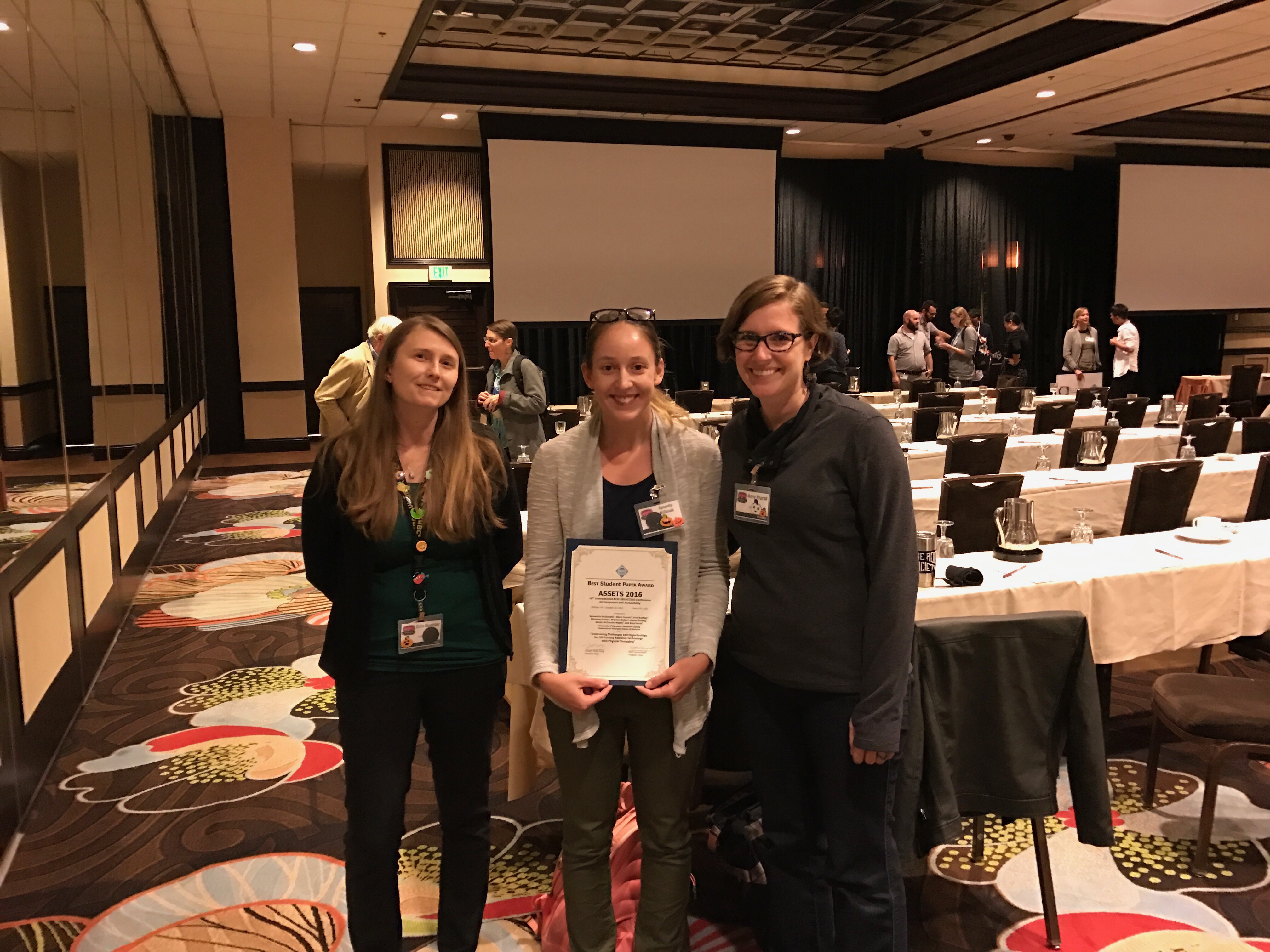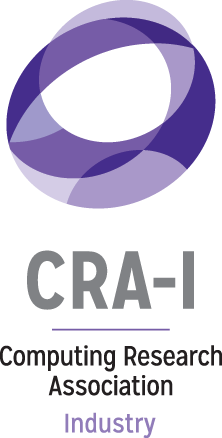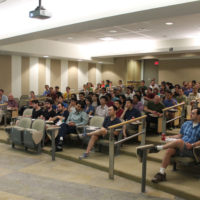CREU Team from UMBC Wins Best Student Paper
By: Samantha McDonald, UMBC, CREU Team 2015-16
Team leader: Amy Hurst
CREU Team: Niara Comrie, Braxtin Dubin, Samantha McDonald
CREU Project Title: Applications of 3D Printing and 3D Design Software in the Design of Assistive Technology
Senior year I participated in the Collaborative Research Experience for Undergraduates (CREU) to research the applications of 3D printing in the field of physical and occupational therapy. This research focused on bringing 3D printing into the physical and occupational therapy practice to provide inexpensive, customizable, and rapidly produced assistive technology for patients with disabilities. Collaborations with physical therapy instructors resulted in our research group teaching a course on 3D printing to a group of graduate level physical therapy medical students. This teaching experience led to a full research paper which won best student paper award at ASSETS, a conference focused on computers and accessibility. I wouldn’t have had the opportunity to do this research if it wasn’t for CREU and their amazing support for undergraduate researchers. CREU gave my group the invaluable opportunity to perform our own research project, and grow skills in leadership, collaboration, research planning, and academic writing. This year long research project only reinforced by ambitions in pursuing a PhD, and gave me a competitive advantage in research experience on my graduate school applications. But most importantly, CREU’s support allowed us to make an impact on the world, and contribute knowledge to a global community of researchers seeking to better the lives of peoples with disabilities.
CREU not only supported our research efforts during the study, but also after our study to present our work at an academic conference. Our research paper was accepted to ASSETS, The International ACM SIGACCESS Conference on Computers and Accessibility. As first author on the paper, I was given the opportunity to present our research. This was not my first time at ASSETS, I presented a poster two years before as an undergraduate, but it was my first time attending this conference as first author on a paper and as a graduate student. Being an accessibility focused conference, many attendees were blind, visually impaired, deaf, or had other disabilities. As a result, the conference is very strict on rules about accessible conference papers and presentations, ensuring that all information was as accessible to everyone. Presenting my research through a sign language translator and ensuring all my information was both auditorily and visually coherent reminded me to include accessibility standards in all my research, and to spread awareness for these standards in my graduate program. During the conference I met so many amazing people from all over the world coming together to present their research. Because the conference was single track, all attendees were in the same conference space, and it created a great environment for networking and discussing presentations. The most valuable part of the conference was networking with other researchers and receiving advice on how to succeed as a first year graduate student. The community of researchers at the conference was very open, and each person I met brought new insights into the field I am just beginning to explore.






